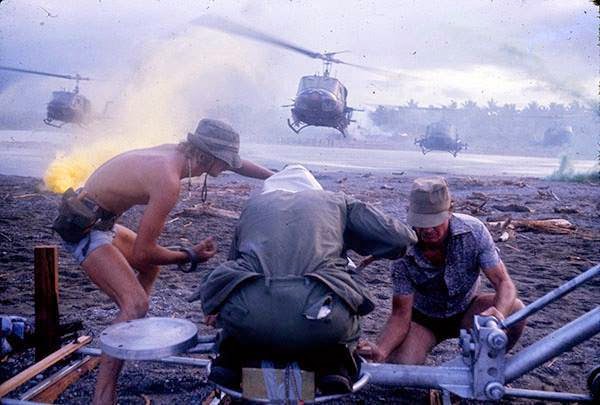Film: Hearts of
Darkness
Genre: Documentary
Directed by: Fax Bahr
George Philippine
Eleanor Coppola
Studio: Paramount Pictures
Release: 1991
Hearts of Darkness
is an in depth, intimate evaluation of the trials and tribulations during the
making of Francis Ford Coppola’s Apocalypse Now (1979). No other
film, with the exception of Les Blank’s Burden of Dreams (a documentary on
the making of Herzog’s Fitzcaraldo) captures the sheer
madness and excruciating physical and mental hardships of making a film.
But Apocalypse Now was not just a film. Conceived as a
retelling of Joseph Conrad’s Heart of Darkness, Coppola initially involved many
of his Bay area comrades in arms, including George Lucas , sound designer
Walter Murch and writer John Fitzcarraldo. What began as small guerilla-style
production eventually ballooned into a massive logistical nightmare. Everything
that could possible go haywire did. Helicopters loaned to the production by
Philippian President Marcos were pulled away during filming to fight rebel
insurgents, Harvey Keitel was replaced two weeks into shooting, Marlon Brando
showed up grossly overweight and unprepared, co-star Dennis Hopper was
virtually stoned the entire shoot and lead actor Martin Sheen suffered a near
fatal heart attack. That’s not to mention the constant typhoons, equipment
breakdowns and murderous heat that plagued the shoot that went over 200
shooting days and took years from development to completion.
 |
| Coppola on set with actor Dennis Hopper |
 |
| Coppola rehearses with actor Marlon Brando |
 |
| Martin Sheen suffered a near fatal heart attack on set |
Hearts of Darkness is ultimately a story about personal
triumph in the face of total adversity and that is perhaps why it is such an
important film. A film that should be viewed by anyone who is interested in
being a filmmaker.
The film was later presented at the Cannes Film festival
where Apocalypse Now was original shown. Eventually the film would go on to win
many awards including an Oscar for best Documentary in 1991.
LINKS:
VIDEO:



















































